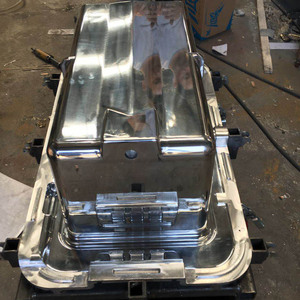Introduction to Polyethylene for Rotational Molding
Polyethylene for rotational molding is a versatile and widely used thermoplastic that plays a significant role in various manufacturing processes. Known for its excellent balance of durability, flexibility, and resistance to chemicals, polyethylene has become the material of choice for manufacturers seeking to create high-quality, robust products. This material is particularly favored for rotational molding, where it can be heated and rotated to create hollow, seamless objects. In this guide, we will delve into key aspects of polyethylene specifically for rotational molding, including its types, features, applications, and advantages.
Types of Polyethylene for Rotational Molding
There are several types of polyethylene used in rotational molding. Each type possesses unique characteristics that make them suitable for specific applications. Here’s a breakdown:
- Low-Density Polyethylene (LDPE): This type is known for its high flexibility and impact resistance. LDPE is often used for products that require extensive bending and movement.
- Linear Low-Density Polyethylene (LLDPE): It provides enhanced strength and toughness compared to LDPE. LLDPE is excellent for applications requiring stress resistance and impact protection.
- High-Density Polyethylene (HDPE): HDPE exhibits superior strength and rigidity, making it ideal for products that need to withstand heavier loads and potential wear and tear.
- Cross-Linked Polyethylene (PEX): Although less common, PEX is utilized for demanding applications due to its enhanced thermal and chemical resistance.
Applications of Polyethylene in Rotational Molding
The versatility of polyethylene for rotational molding allows it to be used in a vast array of applications across different industries. Here are some prominent applications:
- Tanks and Containers: Polyethylene is widely used to manufacture storage tanks for chemicals, water, and other liquids due to its corrosion resistance.
- Automotive Parts: Components like bumpers, fuel tanks, and dashboard elements are commonly made from polyethylene due to its impact resistance and lightweight properties.
- Playground Equipment: The material’s safety features and durability make it ideal for manufacturing various playground structures and safety mats.
- Household Products: Items like storage bins, coolers, and furniture are frequently made from polyethylene, benefiting from its flexibility and colorability.
Advantages of Using Polyethylene for Rotational Molding
Choosing polyethylene as the material for rotational molding offers numerous advantages that contribute to its popularity in manufacturing:
- Durability: Polyethylene can withstand harsh environmental conditions, making it ideal for outdoor applications and long-term use.
- Cost-Effectiveness: The availability and affordability of polyethylene make it an economical choice for large-scale manufacturing.
- Design Flexibility: The rotational molding process allows for complex designs and shapes that are difficult to achieve with other manufacturing methods.
- Sustainability: Polyethylene can be recycled, making it a more environmentally friendly option compared to some other plastics.
In conclusion, polyethylene for rotational molding is a material that merges performance, flexibility, and cost-efficiency. Understanding its types, diverse applications, and notable advantages can empower manufacturers to make informed decisions that enhance their production processes and product offerings.




































































































































































































